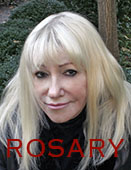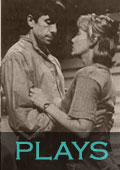 |
 |
 |
 |
 |
 |
|
SolitaireTHE TIME THE PLACE Act One: “Serenity.” Sunday, July fourth. Late morning. Act Two: Scene one. “Serenity,” same day. That night. Seven o’clock. ACT ONE SETTING: The gallery of a Greek Revival mansion on the Gulf of Mexico. The Gulf Coast is the haunt of wealthy but weary New Orleanians: people, wearing seersucker suits and white sundresses, who might otherwise dine at Antoine’s Restaurant in New Orleans. The mansion (one of the few intact after Hurricane Camille) reminds one of plantation culture, of that doomed if circumspect way of life. The gallery overlooks a paradise of flowers and shrubbery, a pool, a duck pond, marshes and woods. Dubbed “Serenity,” the estate remains the heart of a kingdom of wildlife, their final refuge from a world grown too strange, too hard, and too disturbing. The action passes on a gallery, with baskets of blue hydrangeas and white garden furniture placed over soft brick. A ceiling fan spins shadows. Shuttered windows catch reflections from the trees and moss, their glass, trembling ever so slightly from the wind. Columns of plastered brick ascend into the sky. The place has a haunted elegant quality, fusing light and shade in the unrelenting heat. AT RISE: Lights up on the matriarch, Irene Dubonnet’s house. A lazy Sunday. A tray of scotch and bourbon, a bucket of ice, and hors d’oeuvres: olives, celery, pickles, caviar, and cheese straws are set out for cocktails. SOUND: Soft cries of seagulls and lapping of waves. Jacques Brel music resounds as LIGHTS: A surreal light fades up on IRENE DUBONNET playing Solitaire. Other characters drift through as she calls up memories. IRENE I belong to a part of society rarely viewed by outsiders— the Southern top drawer. We’re the handful of families who live on and above the rest. East Coast boarding schools and junior year abroad. Mint juleps and Russian caviar. We slip inside a private door at Antoine’s Restaurant and phone for our personal waiter to escort us to a back room. We are the people the great Louisiana hotels were built for—the lobbies showcasing the Mississippi River, the silver service steaming with jasmine tea, the harpist strumming the “Claire de Lune.” Our women have been plumed and manicured and our men steeled to position themselves for the slightest financial advantage. White suits in summer. Navy blazers for fall . . . a nurse to sleek down every wisp of hair, we dress exquisitely. No white shoes before May. No straw after July. Patent leather always a...second choice. Taste is so inbred that we are impulsively stylish. My family is, I suspect, the most miserable one I know. (Irene slams down the cards. Black out! All the characters exit.) Scene One: My Brother’s Keeper German shepherds growl outside, hurling the scene into reality. ROOSTER is in a rumpled white suit, loafers without socks. QUINT enters in smart business clothes. QUINT Tie up your dog, why don’t you, Roo! Good-for-nothing guard dogs . . . won’t let you in your house! (Wipes off the cuffs of his slacks) Will you look at these pants! BUNKY Dad! Uncle Roo pulled another all-nighter! ROOSTER I watched the sun rise from Hancock Hospital emergency room. QUINT Too much partying! ROOSTER An overdose of pleasure. My lady love slipped and broke her toe. BUNKY What’s that on your leg? ROOSTER A spider bite. BUNKY A black widow? ROOSTER No. An ordinary poisonous one. Actually it’s a brown recluse. They’re gold. QUINT That’s not the cancer returning. BUNKY You had cancer? ROOSTER A little melanoma. On the side of my nose. And on my neck.
Performance HistorySolitaire was published by Zoe Productions, Settle Playwrights Unit as one of the top plays in U. S. for 1993, performed at the Southern Rep, June 1993 and at the "International Conference on Theatre and Politics" sponsored by the American Emabsssy and the Franco-American Commission, at the American Center, and at the Sorbonne Univ., Paris, Nov. 1993. Workshop production at the actors' Centre, London, Oct. 1994. Invited stage reading at the National Arts Club, 2004.
|